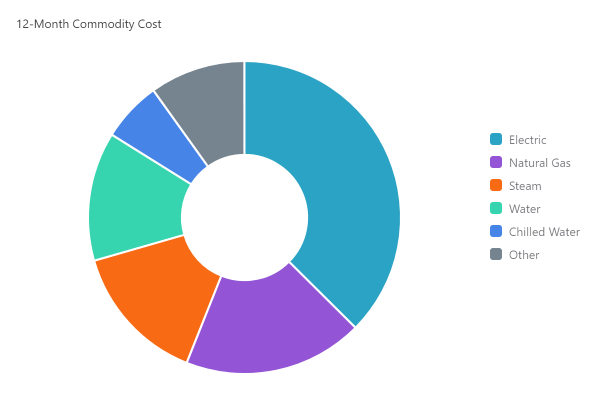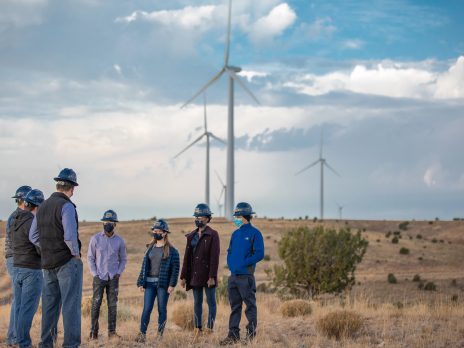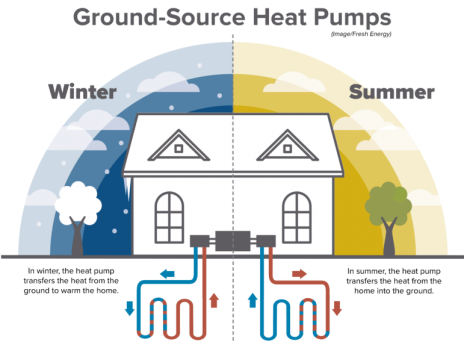Connect With Us...
Climate Action Plan Goals
Decarbonization of the District Energy System
(Heating and Cooling Conversion)
Summary of high-level actions: District heating represents 42% of NAU’s GHG emissions (scope 1). The most pressing action is to secure expert help to develop an RFQ for contracting Energy as a Service or P3 private-public partnership for district heating conversion and decarbonization. The first action NAU must take before any decarbonization effort is to convert the heating system to low-temperature hot water and connect north and south plants. Following extensive analysis, NAU has identified two potential technologies for district energy decarbonization: ground source heat pumps, or the utilization of biomass from local forest restoration efforts.
To ensure reliable campus operations, natural gas boilers will still be needed for backup or to meet peak demand.
Monthly Usage Trends Accordion Open

September 2022 – August 2023
12-month commodity cost (the direct costs involved in the purchase and generation of the electricity is used)
Natural Gas is 18.6% of the total NAU commodity cost
Natural Gas cost: $3,122,178.70

Management
The emissions resulting from the natural gas redundancy will need to be managed using carbon dioxide removal certificates or high-quality offsets for permanent and safe carbon dioxide storage.
Benefits Accordion Open
Benefits: Decarbonization of NAU’s distributed energy system, increased efficiency, reduced need for ongoing maintenance if we use ground source heat pumps, electrification of gas appliances, contribute to forest restoration and climate resiliency around Flagstaff.
Uncertainties Accordion Closed
Uncertainties: Due to the high cost of capital investment for the district system, we believe the more feasible way forward is to enter some sort of public and private partnership. However, there could be opportunities in the form of grants and state and federal funding with the new federal climate and infrastructure legislation.
Current Action Accordion Closed
The NAU 2021 Climate Action Analysis commits to a next-generation campus energy system and to the immediate development of two concepts with selection to be made late in 2024 and the system to be in place within a decade.
One option is woody biomass as a primary heating source. Biomass fuels are considered carbon neutral if they would have otherwise contributed to methane release into the atmosphere. For example, a wood feedstock that is removed as a byproduct of sustainable forest management avoids the emissions associated with wildfires caused by not managing the forest or open burning or composting of wood that is removed.
A second option is electrification through low-temperature heating water conversion with central heat pumps. The central heat pumps would be ground-source geothermal heat pumps which pull energy from a constant ground temperature year round to provide carbon-free heating and cooling. These are highly efficient heating and cooling system that uses the stable temperature of the Earth’s ground or water to regulate the indoor climate. In the winter, it extracts heat from the relatively warm ground and transfers it into your home to provide warmth, while in the summer, it reverses the process, removing heat from buildings and depositing it into the cooler ground, effectively cooling spaces. This technology harnesses nature’s temperature consistency to offer a more energy-efficient and eco-friendly alternative to traditional heating and cooling methods.
Future Action Accordion Closed
- Seek expert help to develop an RFQ for contracting energy as a service for district heating conversion and efficiency
- Benefits: Reduces financing and project risk; provides appropriate information for decision-making
- Conversion of heating system to low-temperature hot water and connection between the North and South plant
- Outcomes: Upgraded heat distribution system suitable for Geothermal or High-Efficiency Biomass Heating
- Benefit: Higher heating efficiency; Safer heat distribution. Couples to a decarbonized heating system
- External support to issue RFP for public-private partnership (P3)
- Outcomes: Clear understanding of NAU’s needs when considering a P3 partnership
- Assess: Rehabilitate or repurpose or salvage HLC 10,780 therm/yr. Solar hot water R&D microgrid
- Benefits: 13000 therms produced annually
- Quantification of emission reductions realized by action/investment in the decarbonization of district heating/cooling system
- Benefit: Transparent reporting and evaluation of carbon neutrality investment
